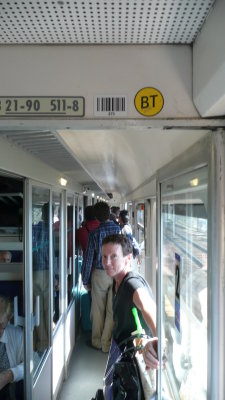
Wednesday, Sept. 22 -- The train ride from Sestri Levante to Naples was . . . interesting. Most seats had been double-booked. |
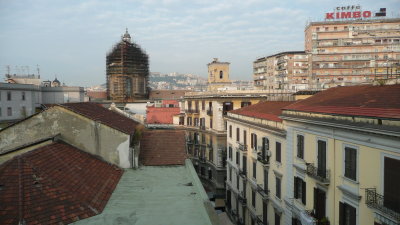
Seven hours later, we arrive in Naples. The view from our Una Hotel room. |
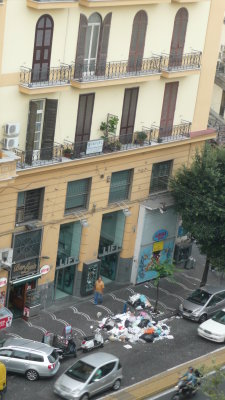
We had been warned about the thieves, but not the garbage strike. |
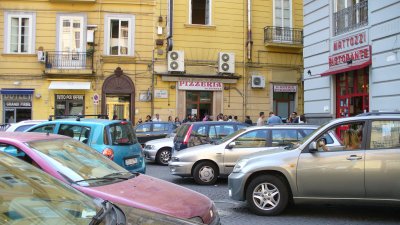
Thursday, the Archeological Museum, then pizza! The "da Michele" is one of two famous pizzerias in Naples. |
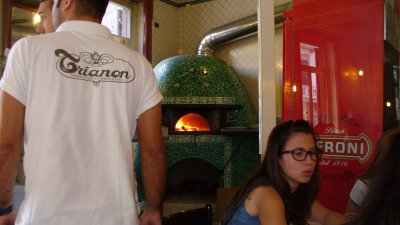
We ate at the other one, the Trianon. Very basic menu -- pizza, beer, red wine, coke. |
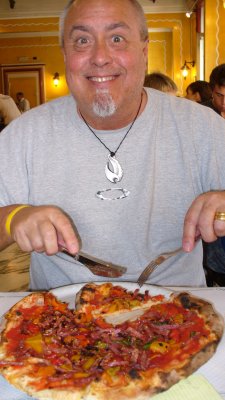
Pierre was very happy with his pizza. :-) |
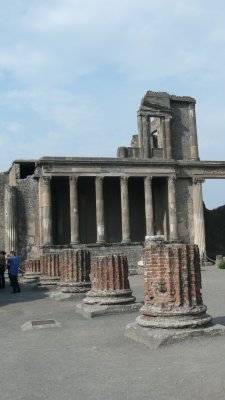
Sept. 24 -- Pompeii! Buried under 30 feet of volcanic ash in A.D. 79. The Basilica was under reconstruction at that time. |
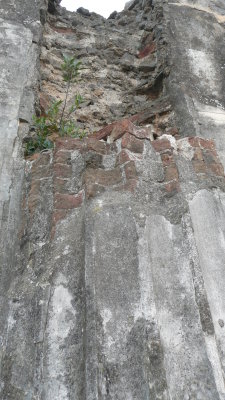
Throughout the Roman Empire, columns were routinely made of bricks stacked around a central core, coated with marble dust stucco |
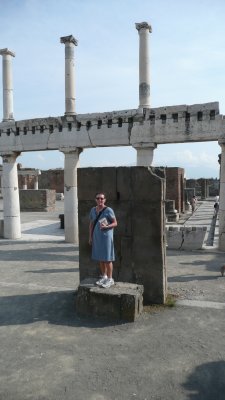
Kathleen standing at one end of the Basilica. |

Looking into the Forum, Pompeii's commercial, political, and religious center. |
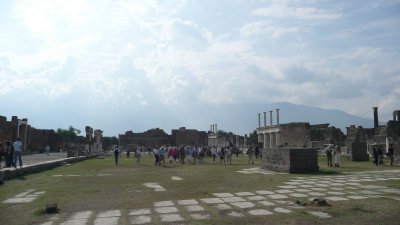
Looking back on the Forum from the Temple of Jupiter. |
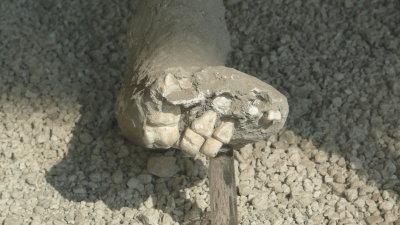
In the fish and produce market, there are plaster casts of a couple of the 2000 people who suffocated under the ash. |
 |

A road sign indicating a pedestrian only zone. |
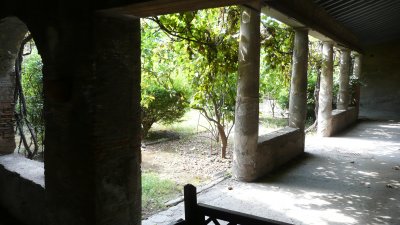
The outer courtyard of the men's baths. |

The changing room and warm water bath. |

Many of the frescoes and stucco friezes still remain. |
 |
 |
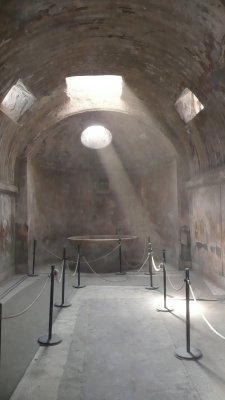
The steam room and hot water bath. |

Pompeii citizens frequently bought "fast food" meals from vendor stalls like this one. |

The original Cave Canem mosaic, in the entry way of a Pompeii villa. |

Roofs were crushed by the weight of the ash, but many walls remain. Notice the grooves worn in the street by chariot wheels. |

A baker's oven. |
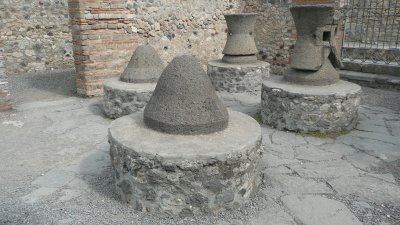
Conical millstones to grind flour. They were rotated by donkeys harnassed to wooden bars. |

The large villas had beautiful fountains in the entryways, surrounded by mosaic floors. |
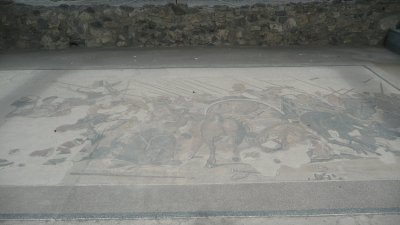
A replica of the Battle of Alexander floor mosaic in the House of the Faun, Pompeii's largest villa. |

Alexander |

Once Pompeii was excavated, starting in 1748, the structures were subject to deterioration from plants, humans, and the elements |

A decorative floor mosaic. |
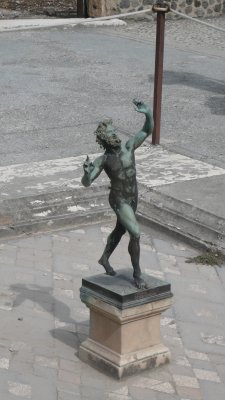
A replica of the Dancing Faun. |

Pompeii's streets were flooded for cleaning at night. Pedestrians used stepping stones to cross. 3 stones meant a major road. |
 |

The Small Theatre, used for intimate performances like poetry readings. |
 |

This open space was used by theater-goers between acts and sometimes by gladiators in training. |

The entrance to the Grand Theater. |
 |
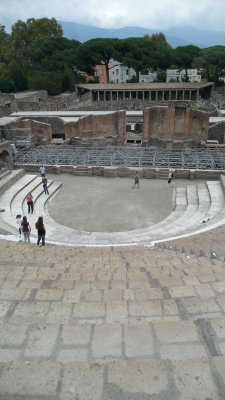
It's still used for performances today. |











